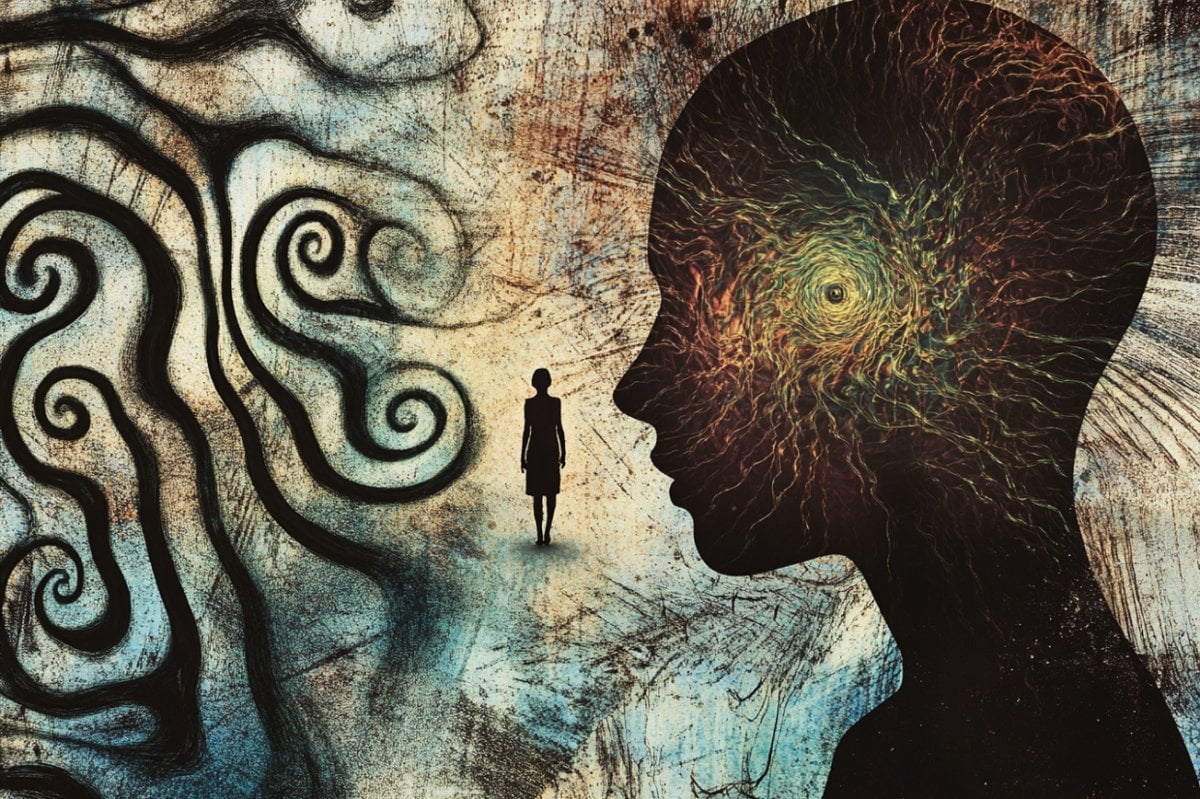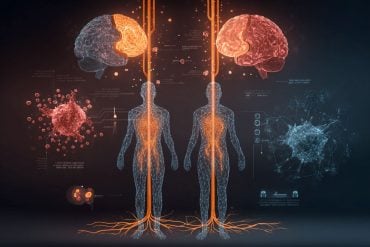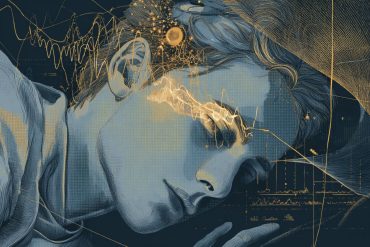Summary: A new study has found that delusions typically emerge before hallucinations in individuals at high risk for psychosis, overturning a long-standing belief that hallucinations drive delusional thinking. By analyzing symptom progression across three large cohorts, researchers consistently observed that delusions were the earliest symptom, reappearing even before hallucinations during relapses.
The study suggests that disruptions in how the brain processes prediction errors may underlie delusions, with hallucinations emerging as a secondary effect. These insights may lead to earlier intervention strategies and better prevention of full-blown psychotic disorders.
Key Facts:
- Symptom Onset: Delusions often appear before hallucinations in early psychosis.
- Predictive Processing: Psychosis may stem from the brain misinterpreting prediction errors, leading to distorted beliefs.
- Prevention Potential: Understanding symptom progression opens the door to preventive treatments targeting brain hyperexcitability.
Source: Yale
Patients with psychosis have a disrupted connection to reality, often suffering from delusions and hallucinations. These symptoms have been thought to arise from the same brain processes, but a new Yale study upends this long-held belief.
The new study examined the natural progression of delusions and hallucinations in two large groups of adolescents and young adults in the earliest stages of psychosis—that is, individuals who experience these symptoms but not at the severity typically seen in fully-formed psychosis.
To see whether their findings were also observed in those who did develop the disease, the researchers also included a sample of individuals experiencing their first episode of psychosis.
Across these groups, the authors observed a consistent pattern in which delusions appeared before hallucinations. Even more striking, this same pattern was seen when symptoms disappeared and came back: Delusions re-emerged before hallucinations.
The findings of this study were recently published in Biological Psychiatry.
“We were interested in understanding how delusions and hallucinations start and develop over time, because that could give us important hints as to where these symptoms come from in the first place,” says Albert Powers, MD, PhD, associate professor of psychiatry and the study’s senior author.
“We looked at what we call the prodromal stage, when symptoms are just beginning to emerge. No one has been able to examine symptom emergence in so many people this early in the illness.”
What are delusions and hallucinations?
Delusions and hallucinations both disrupt a person’s perception of reality, but they are distinct symptoms of psychosis. Delusions are fixed, often bizarre beliefs that persist despite clear contradictory evidence.
“For example, a person might believe they are the devil,” explains Powers. “And there is very little you could say to convince them otherwise.”
Hallucinations, on the other hand, involve perceiving things that aren’t actually present in the environment.
“There’s nothing around you, and yet you see or hear it,” Powers explains.
Most research has studied delusions and hallucinations once they are fully formed. However, these symptoms often unfold gradually over time, over an average of 22 months.
Delusions may begin subtly, with a growing sense of suspicion or unease. Similarly, hallucinations might first appear as heightened sensations or vague sounds like static or indistinct murmurs, which can eventually develop into clearly perceived voices.
This slow progression ultimately culminates in the onset of psychosis in around 20% of those presenting these early symptoms.
Powers recalls that during his medical training, delusions and hallucinations were typically treated as a single category, largely because they often responded to the same medications.
When they were considered separately, it was often hypothesized that delusions may develop as an attempt to make sense of hallucinations. For instance, if someone hears the sound of footsteps behind them, they might come to believe that FBI agents are following them.
“You might expect that hallucinations would come first because they create a need for explanation,” says Powers.
“Why do I keep hearing people behind me all the time? Well, it’s because someone is after me.”
While that hypothesis seems intuitive, the new study reveals a surprising twist: Delusions typically emerge before hallucinations.
In psychosis, delusions most often arise before hallucinations
In their new study, the researchers analyzed data from three large cohorts. Two of the datasets came from the North American Prodrome Longitudinal Study, which consisted of individuals identified as being at high risk for developing psychosis.
The third dataset was drawn from the Montreal-based Prevention Program for Psychosis, which included participants experiencing their first psychotic episode.
“When people enrolled in these studies, clinicians assessed their symptoms—how severe they were, when they started, and how often they happened,” says Powers.
“But until now, no one had systematically examined which symptoms were most likely to start first.”
Across all three datasets, researchers found that most participants experienced both early delusions and hallucinations. However, among those who presented only one symptom, delusions were more common. Furthermore, individuals who experienced both were more likely to report that delusions appeared before hallucinations.
The study also followed symptom changes during periods of remission. Interestingly, the pattern appeared to reverse—participants typically experienced the disappearance of hallucinations before delusions. Then, if their symptoms reemerged, patients were once again more likely to report that delusions emerged before hallucinations.
Hallucinations may be the brain’s attempt to compensate for drivers of delusions
While these findings may seem surprising, they fit with a set of emerging theories in psychiatry based on computational neuroscience. These theories suggest that delusions may arise from disruptions in how people learn about the world. This process centered on what is known as “predictive processing.”
When a person experiences something that doesn’t match their expectations about the world, this prompts the brain to revise its expectations—it learns. For example, as a person arrives at work, they might expect their computer to turn on, as it does each morning. If one day the screen fails to light up, this is a violation of their expectation—a prediction error.
“When a prediction that you have about the world is violated, this tells your brain to form a new belief or update its current beliefs about what is going on in the world,” says Powers.
“This helps us keep up with the world and predict what’s going on around us. Predictions and prediction errors drive that process.”
In the earlier example, the person at work might form a new belief that their computer is dysfunctional or unplugged, leading them to check the power or consider taking it in for repairs.
In individuals with psychosis, dysfunction in one of the brain’s neurotransmitter systems can lead to hyperexcitability of the cerebral cortex, which could inject noise into the system.
This, in turn, could drive inappropriate learning via prediction errors not tied to a new state of the world, but to this noisiness. This would then lead to the formation of beliefs that don’t conform to reality, or delusions.
For example, a person might misinterpret an insignificant or coincidental event, such as witnessing two people conversing, as something new and more personally significant, like believing they are secretly talking about the person.
As prediction errors become excessive, individuals might begin to distrust the information they’re receiving from the world around them because it is tainted with noise. Hallucinations can arise when individuals begin trusting their expectations more than incoming sensory information—and thus start perceiving things that aren’t actually there.
“This disconnect would cause them to conclude that something is around them, even though the sensory information doesn’t say it is,” Powers explains.
In this way, the noise that drives delusion formation could also make the brain distrust new information after some time, leading to hallucinations.
Research could lead to psychosis prevention
By studying how psychotic symptoms form and evolve, Powers hopes psychiatrists can move toward preventing psychosis, rather than just managing it once it appears. Current treatments primarily target symptoms without addressing the underlying mechanisms.
“When you go to a psychiatrist, we focus on alleviating symptoms that cause problems in your life,” Powers says. “In the future, we want to stop the process that leads to symptoms in the first place.”
He points to cardiology as a model: Cardiologists treat heart attacks but also work to prevent them by addressing the root causes, such as high cholesterol or hypertension.
Psychiatry, he says, lacks comparable preventative tools—but he envisions that changing. If hyperexcitability in the cerebral cortex is indeed driving delusions and hallucinations, then it may be possible to intervene earlier, before psychosis takes hold.
“And there are drugs that do this,” says Powers. “They’re experimental right now, but they manage to decrease hyperexcitability of the cortex.”
Researchers are currently testing whether these medications can effectively treat early signs of psychosis.
Powers believes that understanding how the brain misinterprets sensory data has implications far beyond psychosis.
“This is one of the first glimpses at what a pathophysiological model in psychiatry might look like,” he says.
“Understanding how psychotic symptoms develop could help us understand how this could happen in other psychiatric disorders, such as depression and anxiety, PTSD, and obsessive-compulsive disorder. All of these conditions affect the way we learn about the world and act upon it.”
Looking ahead, his team plans to analyze electroencephalogram and magnetic resonance imaging data to try to identify biomarkers of psychosis. “Our next step is to study the actual brain data and see if we can catch the signatures of symptom emergence itself,” Powers says.
Funding: This work was supported by the National Institute of Mental Health (awards R01MH129721 and R01MH131768).
The content is solely the responsibility of the authors and does not necessarily represent the official views of the National Institutes of Health. Support also came from the Burroughs-Wellcome Fund, the Carol and Eugene Ludwig Family Foundation, the State of Connecticut Department of Mental Health and Addiction Services, the Yale Department of Psychiatry, and Yale School of Medicine.
About this mental health and psychosis research news
Author: Isabella Backman
Source: Yale
Contact: Isabella Backman – Yale
Image: The image is credited to Neuroscience News
Original Research: Closed access.
“Emergence and dynamics of delusions and hallucinations across stages in early psychosis” by Albert Powers et al. Biological Psychiatry
Abstract
Emergence and dynamics of delusions and hallucinations across stages in early psychosis
Background
Hallucinations and delusions are often grouped together within the positive symptoms of psychosis. However, recent evidence suggests they may be driven by distinct computational and neural mechanisms. Examining the time course of their emergence may provide insights into the relationship between these underlying mechanisms.
Methods
Participants from the second (N = 719) and third (N = 699) iterations of the North American Prodrome Longitudinal Study (NAPLS 2,3) were assessed for timing of CHR-P-level delusion and hallucination onset. Pre-onset symptom patterns in first-episode psychosis patients (FEP) from the Prevention and Early Intervention Program for Psychosis (PEPP-Montréal; N = 694) were also assessed. Symptom onset was determined at baseline assessment and the evolution of symptom patterns examined over 24 months.
Results
In all three samples, participants were more likely to report the onset of attenuated/subthreshold delusions prior to attenuated/subthreshold hallucinations (odds ratios (OR): NAPLS 2=4.09; NAPLS 3=4.14; PEPP, Z=7.01, P < 0.001) and to present with only attenuated/subthreshold delusions compared to only attenuated/subthreshold hallucinations (OR: NAPLS 2=5.6; NAPLS 3=11.11; PEPP=42.75).
Re-emergence of attenuated/subthreshold delusions after remission was also more common than re-emergence of attenuated/subthreshold hallucinations (Ps < 0.05), which more often resolved first (Ps < 0.001). In both CHR-P samples, ratings of delusional ideation fell with the onset of attenuated hallucinations (P = 0.007).
Conclusions
Attenuated/subthreshold delusions tend to emerge before attenuated/subthreshold hallucinations and may play a role in their development. Further work should examine the relationship between the mechanisms driving these symptoms and its utility for diagnosis and treatment.








